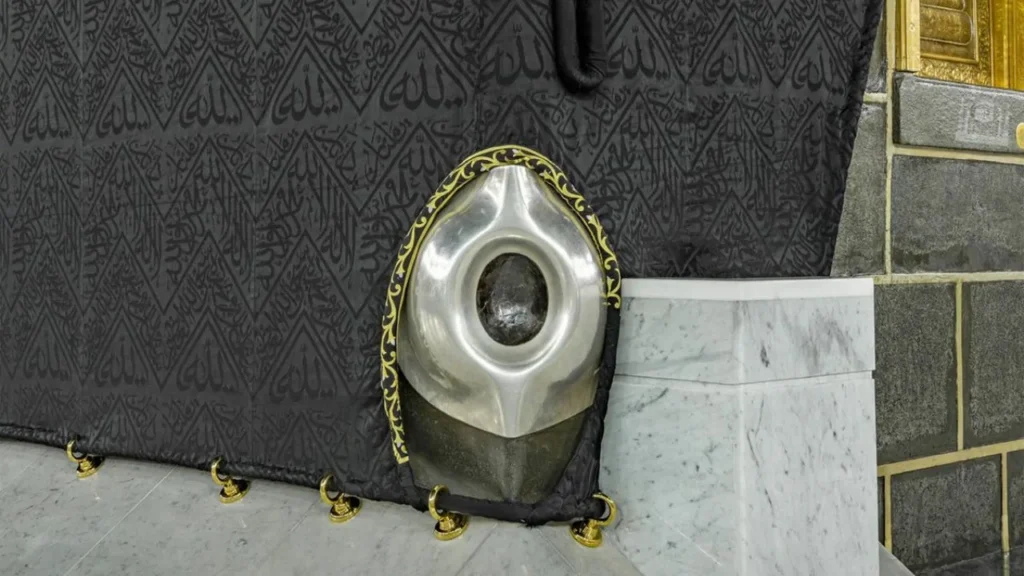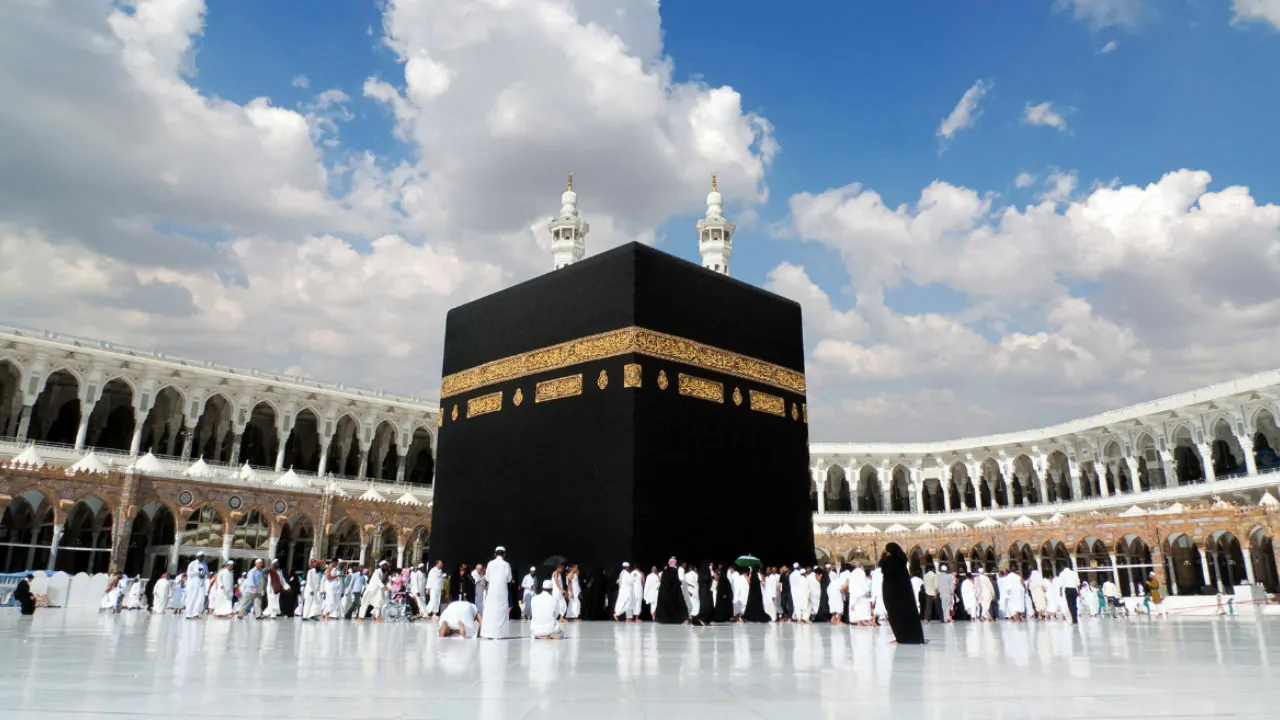Among the most revered parts of the Kaabah is the Hajar Aswad, also known as the ‘Black Stone’. Located at the eastern corner of the Kaabah, this sacred stone is touched and kissed by millions of Muslims during the Tawaf ritual in Makkah.
The Hajar Aswad holds a special place in Islamic history. According to narrations, it was sent down from Jannah (Paradise) and originally shone as a white stone, but over time, it turned black due to the sins of mankind. This transformation reminds believers of the impact of sin and the importance of repentance.
The stone is currently set in a silver frame and mounted about 1.5 meters above the ground. It is composed of several pieces that have been bonded together. Pilgrims aim to touch or kiss the Hajar Aswad if possible, following the Sunnah of the Prophet Muhammad SAW. However, due to the large crowds, raising one’s hand toward it as a symbolic gesture is also accepted.

The Hajar Aswad also played a role in the early life of Prophet Muhammad SAW. When the Quraysh tribe were rebuilding the Kaabah, a dispute broke out over who would place the stone back in its position. The Prophet, still young, resolved the conflict by placing the stone on a cloth and allowing all the tribal leaders to lift it together, while he guided it into place.
Understanding the Hajar Aswad deepens our appreciation of Islamic heritage and the spiritual connection shared by Muslims across the world.
